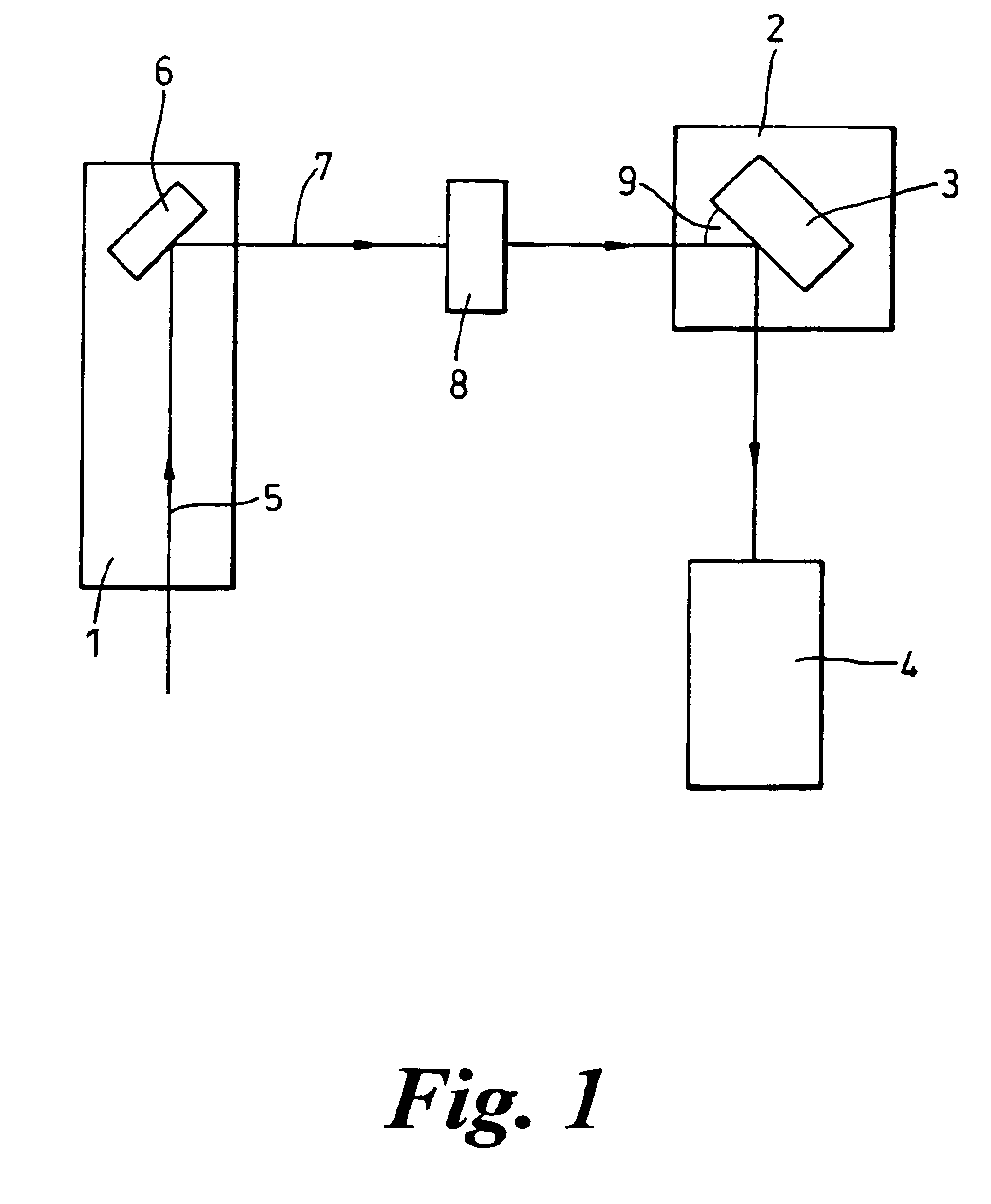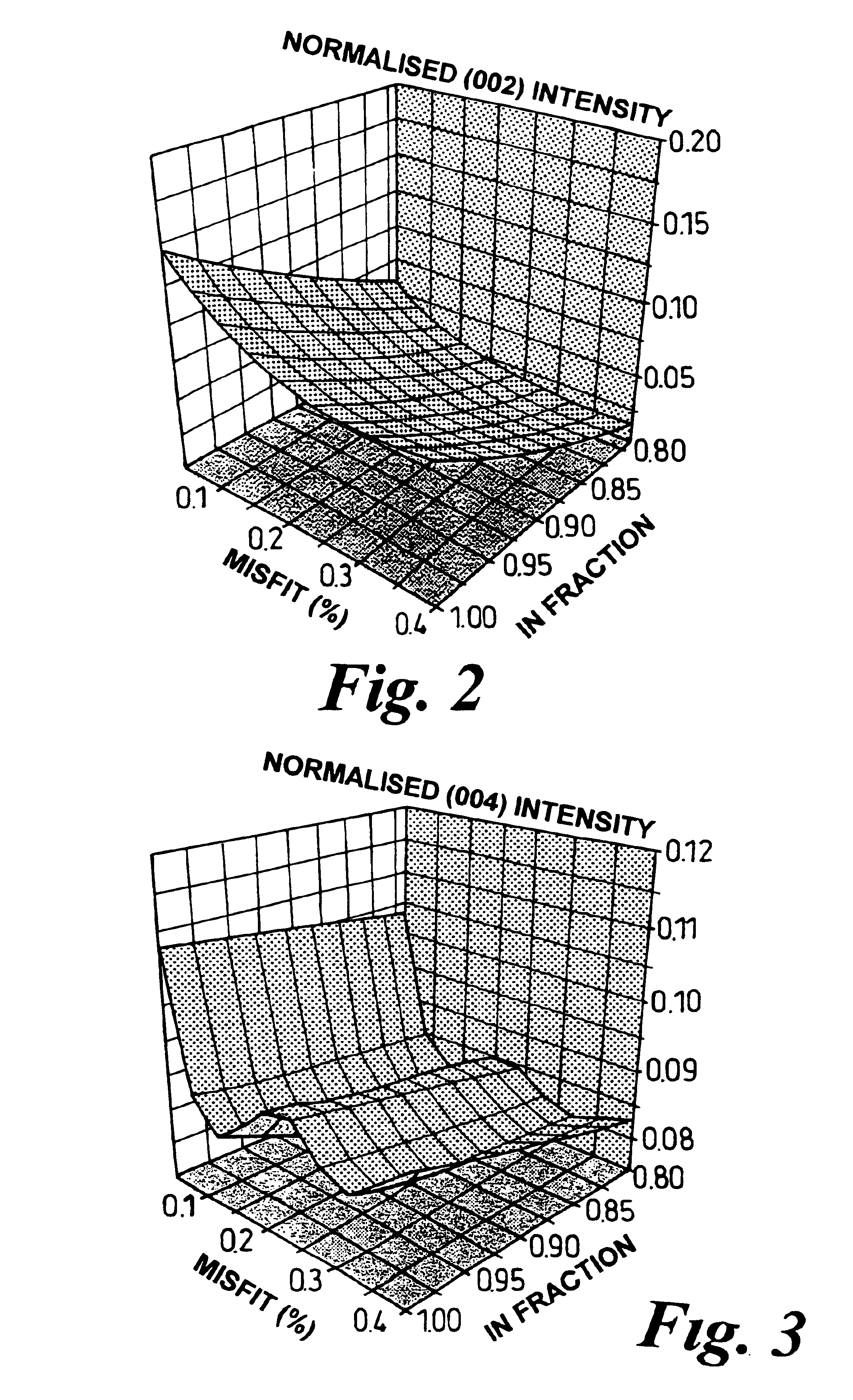Method and apparatus for the analysis of material composition
a technology of composition and method, applied in the direction of material analysis using wave/particle radiation, semiconductor/solid-state device testing/measurement, instruments, etc., can solve the problems of difficult growth of quaternary iii-v compounds with precisely controlled chemical compositions, lack of reliable and simple methods for determining the chemical composition of these materials, and lack of unique solutions. , to achieve the effect of reducing the cost of such apparatus and being cheaper to produ
- Summary
- Abstract
- Description
- Claims
- Application Information
AI Technical Summary
Benefits of technology
Problems solved by technology
Method used
Image
Examples
Embodiment Construction
[0078]The apparatus comprises a diffractometer having the general components shown in FIG. 1. The diffractometer may be a Bede scientific D3 high resolution diffractometer with a rotating anode source or a Bruker D5000 HR diffractometer operating with a standard sealed tube X-ray source and a Gobel mirror. Each comprises an x-ray source 1, a sample stage 2 on which a sample 3 of the semiconductor material to be analysed is mounted and a detector 4 for detecting the x-rays diffracted from the sample. The detector is a scintillation detector. The x-ray source comprises a beam of electrons 5 incident on a copper target 6 which produces a beam of characteristic x-rays 7. These are passed through an optical component 8 which acts to partially monochromates and shape the beam 7. The optical component is a Si (220) four reflection monochromator (Bede diffractometer), or a Ge (440) four reflection monochromator (Bruker diffractometer). These select a portion of the K-alphal characteristic x...
PUM
| Property | Measurement | Unit |
|---|---|---|
| wavelengths | aaaaa | aaaaa |
| wavelengths | aaaaa | aaaaa |
| size | aaaaa | aaaaa |
Abstract
Description
Claims
Application Information
 Login to View More
Login to View More - R&D
- Intellectual Property
- Life Sciences
- Materials
- Tech Scout
- Unparalleled Data Quality
- Higher Quality Content
- 60% Fewer Hallucinations
Browse by: Latest US Patents, China's latest patents, Technical Efficacy Thesaurus, Application Domain, Technology Topic, Popular Technical Reports.
© 2025 PatSnap. All rights reserved.Legal|Privacy policy|Modern Slavery Act Transparency Statement|Sitemap|About US| Contact US: help@patsnap.com



